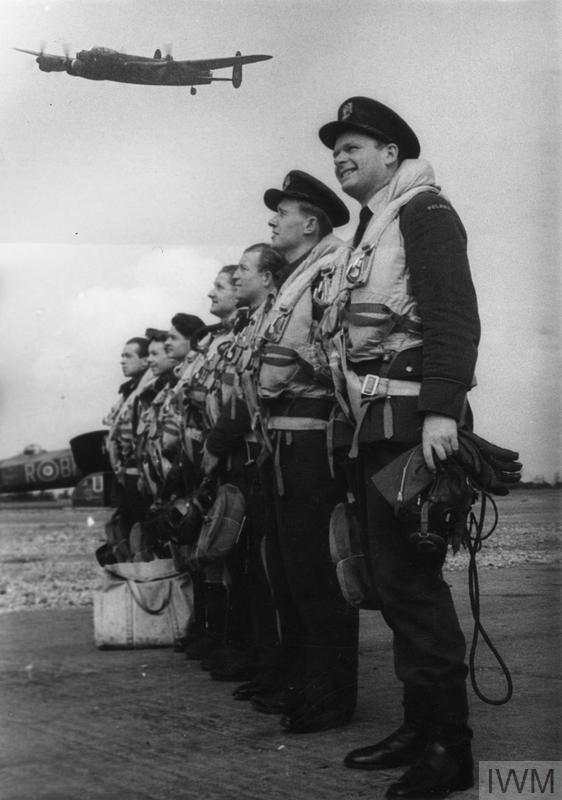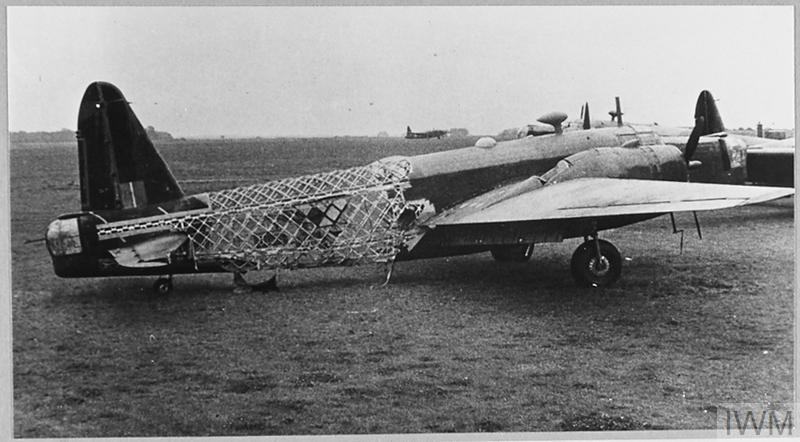
On the night of June 12 to 13, 1944, eight Lancasters from the Polish 300 Squadron departed from Faldingworth airbase on a mission to Gelsenkirchen. A total of 286 bombers departed for this mission. Seventeen did not return that night, including three from 300 Squadron. Two of the Lancasters were shot down over the Netherlands. Of the 14 crew members, only one survives the crash.
Bomb aimer Morski from the Lancaster BH – C is captured. Flight engineer Bladowski washed ashore at Wijdenes and is buried there and later transferred to Breda. The other crew members were recovered during the salvage of the aircraft in May 2003 and were buried in a shared grave in Breda.
From Lancaster BH – K, wireless operator Pacula is MIA. The other crew members were found during 1944. Flight engineer Szeliga is buried in Elburg. Three crew members, tail gunner Bardzo, pilot Różański and turret gunner Wróblewski, first found a grave in Urk but were later reburied in Amersfoort, where bomb aimer Bakun and navigator Hahn are also buried. The photo accompanying this post shows Różański’s crew in June 1944, shortly before they were killed.
About the 300 Squadron: “Ziemi Mazowieckiej”
On June 28, 1940, the British Air Ministry sent an order to the 6th Bomb Group to form the first Polish bomber squadron No. 300. This started with the single-engine Fairey Battle. Later in the war they switched first to the twin-engine Wellington and finally to the four-engine Lancaster.

300 Squadron flew 3,891 missions, including 684 combat missions, dropping 10,712 tons of bombs. 15 German aircraft were destroyed or damaged during the fighting, with 79 own losses. 371 pilots were killed and 87 were captured. The squadron was disbanded on January 2, 1947. Of the 371 victims, 44 are buried in the Netherlands.

An extensive history of the squadron can be found on the Bomber Command Museum of Canada website. It also contains a passage about both of these bombers:
“LL807 was brought down by flak at the Dutch coast, probably from Texel, while outbound, and crashed into the Ijsselmeer with no survivors from the crew of F/L Rozanski. DV286 was on its way home when it was intercepted by a night fighter, and also crashed into the Ijsselmeer, killing F/S Rembecki and all but one of his crew. The bomb-aimer, P/O Morski, managed to drop through the escape hatch underneath him, and parachute to safety, and he was rescued by two Dutch fishermen, before being handed over to the Germans.” (pag 180).
Photos of the aircraft and crew can be found on pages 178 and 179.

More information about both aircraft
- View the loss register of Lancaster DV286 BH – C (PDF)
- View the loss register of Lancaster LL807 BH – K (PDF)
The site tudiegroep Luchtoorlog 1939-1945 writes the following about the crash of DV286:
“Lancaster DV286 took off from RAF Faldingworth at 11:20 PM for a bombing raid on the Nordstern synthetic oil plant at Gelsenkirchen, Germany. On its way home, while crossing the Dutch coast, it crashed in fire after being intercepted by night fighter pilot Leutnant Gottfried Hanneck of 6./NJG 1, who had taken off from Deelen airfield in a Bf 110G-4. Pilot P/O. B.F. Morski was rescued by two Dutch fishermen and later transferred to a German naval ship. Flight Engineer Sgt. F.S. Bladowski washed up at Wijdenes. The aircraft was recovered in May 2003 and the crew members were subsequently buried in Breda on October 25, 2003.”
Bladowski was buried on June 17, 1944, in Wijdenes and was later transferred from Wijdenes to Breda, where he rests in an individual grave. The five crew members recovered in 2003 are laid to rest in a communal grave.


Upon further research on the internet, it appears that the Aircraft Recovery Group Foundation has been involved in the recovery of the victims. On their website, there is an account of the search and photos of the recovery.
Since 2007, there has been a monument at Zuiderdijk 41 in Wijdenes in memory of the crew of this Lancaster.

Sources
The PDF of Bomber Command Museum of Canada can also be consulted on our site if the above link no longer works (in the long term).
Several photos of the squadron and crews can be found on the IWM website. The photos in this article are from this source.
Below is a Wellington from the squadron that did return to base.

